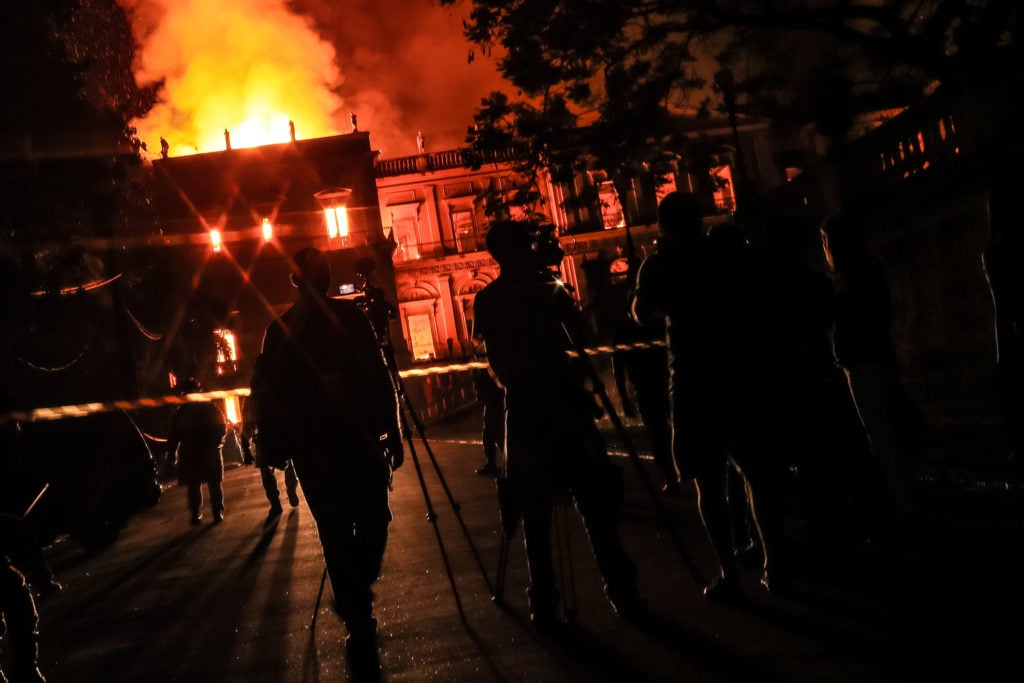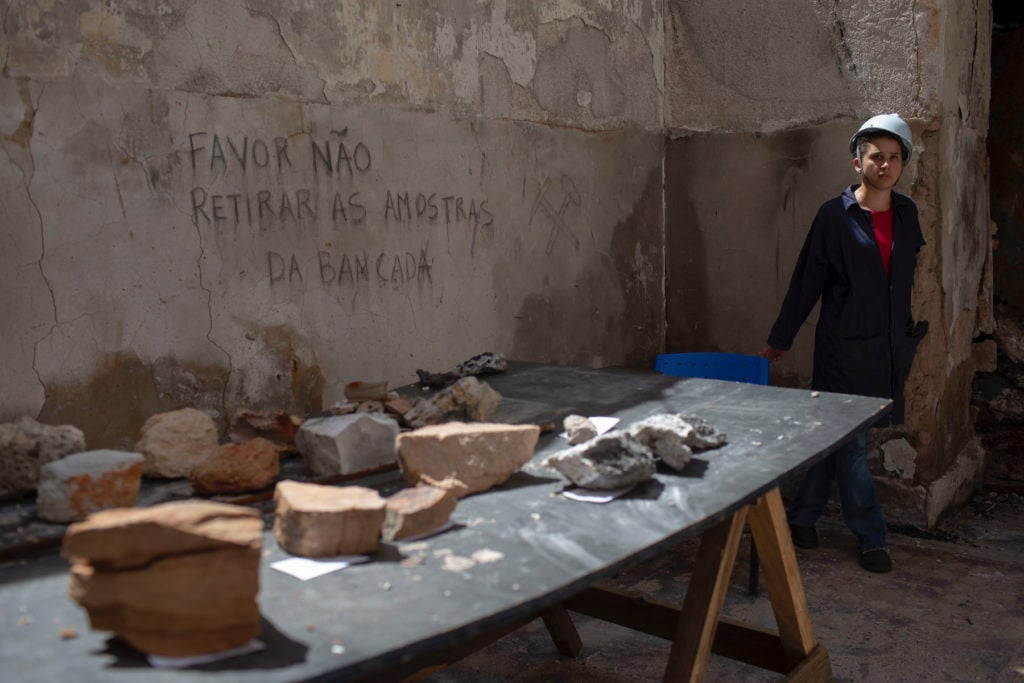Art World
One Year After a Devastating Fire, the National Museum of Brazil Has Announced Plans for a Partial Reopening
The museum has also revealed that the damage to its collections was less severe than initially believed.

The museum has also revealed that the damage to its collections was less severe than initially believed.

Last year, the world looked on in horror as the National Museum of Brazil—the oldest and most significant historical and scientific museum in the country—was consumed by flames.
Now, a year after the tragedy, the institution has announced plans for a partial reopening, aiming to open its doors in three years.
The news comes from a press conference held at the Brazilian Academy of Sciences with Denise Pires, the head of the Federal University of Rio de Janeiro, which is in charge of the site.
“Our intention is to inaugurate a part of the reconstructed palace in 2022 with expositions that let us celebrate the bicentennial of Brazil’s independence,” she told the press, according to La Vanguardia.
Some 11 million reales ($2.7 million) have already been spent addressing the damage to the museum. Pires announced at the conference that the museum had raised 68 million reales ($16.4 million) for reconstruction. The money has mainly come from the Brazilian government, but also includes donations from international organizations such as UNESCO and foreign government, most notably Germany. Exactly how much the total restoration of the institution will cost is not yet known.

A worker guards artifacts found among the debris inside the National Museum of Brazil. Photo courtesy Mauro Pimentel/AFP/Getty Images.
Following the fire, which was caused by a malfunctioning air conditioner, it was initially believed that as much as 90 percent of the museum’s collection was incinerated. While the final toll was not quite so devastating, the extent of the loss is still great: 17 of its 34 collections were completely or partially destroyed, amounting to about half of the museum’s holdings.
These range from its entomology collection, featuring a unique catalogue of 5 million insect specimens, to its collection relating to native cultures. One indigenous researcher compared the destruction of those artifacts to “a new genocide.”
After an extensive effort, recovery crews were able to boost the number of recovered items from 1,500 to 2,000, according to a report from the AFP. Among those were objects initially thought to have been lost, such as the 11,500-year-old skull of “Luzia,” the oldest human ever found in the Americas, and the Bendegó meteorite, the largest ever found in the country.
This week’s press conference also unveiled some new objects that had been saved, including a 19th-century samurai mask and a bronze statue of the Egyptian goddess Bastet.
Reconstruction of the facade of the historic building is scheduled to begin in September.